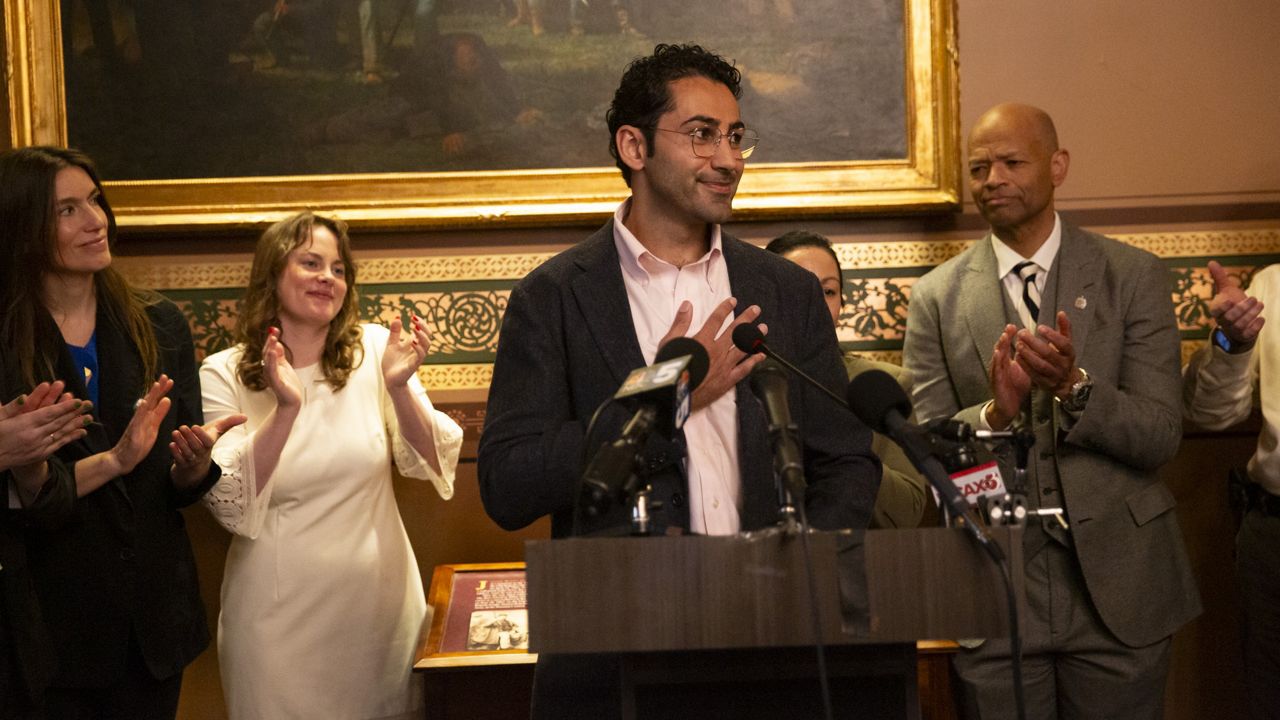The Meatpacking District is now one of New York City's trendier neighborhoods, home to more boutiques than butchers. But in one building, just steps from the High Line, a handful of meatpacking companies endure, operating as they have for more than a century. NY1’s Michael Scotto filed the following report:
Just after dawn, the beef comes off the trucks, massive 250 pound slabs hanging from metal hooks.
It’s a scene once common across the Meatpacking District, a neighborhood where couture has replaced cattle. For third-generation meatpacker John Jobbagy, it often feels like he's in an alternate universe.
“Back then you didn't see anyone who didn't have a white coat on. It was all butchers and meat guys. It was an interesting neighborhood, full of characters. It was rough. It was vulgar.”
Characters, as in burly butchers -- and prostitutes.
Jobbagy, 61, owns the J.T. Jobbagy Meat Company. He has been working in the district since high school, when the neighborhood was still considered one of the world's largest meat- and poultry-receiving markets.
Meatpackers have been here since the late 1800s, taking carcasses from animals slaughtered far way and cutting them into pieces for markets and restaurants.
But the industry started to decline in the 1970s, unable to compete with companies out West shipping vacuum-packaged meat to supermarkets. Many of the Manhattan meatpackers pulled up stakes, replaced by bars and restaurants, which only accelerated the neighborhood's transformation.
“To me, the turning point in this neighborhood was when Pastis opened up … then all of a sudden the meatpacking district became hot, hot, hot,” Jobbagy says.
Soon the glitterati moved in, drawn to the grit that was being pushed out.
A half century ago, Jobbagy says, there were 300 companies here employing more than 2,000 people. There are just seven meatpackers left, and only 125 workers.
The remaining meatpackers operate out of the same city-owned building. To keep them there, the city charges rent of less than $20 a square foot, not even 10% of the market rate. Jobbagy says it's a perfect location, close to his customers, most of them Manhattan restaurants.
But it's unclear what the future holds. The lease is up in 2032. For now, the city says there are no plans to sell the building and move the businesses to meat markets in the Bronx or Brooklyn.
Jobbagy says he misses the days when this district south of 14th Street by the Hudson River was the center of the industry.
“I'd take the old neighborhood in a minute. It was fun. I'm telling you, It was great,” he says.
A neighborhood that still offers a glimpse of the way things used to be in New York.









_PKG_Mn_Ban_E-Bikes_Rally_CLEAN)